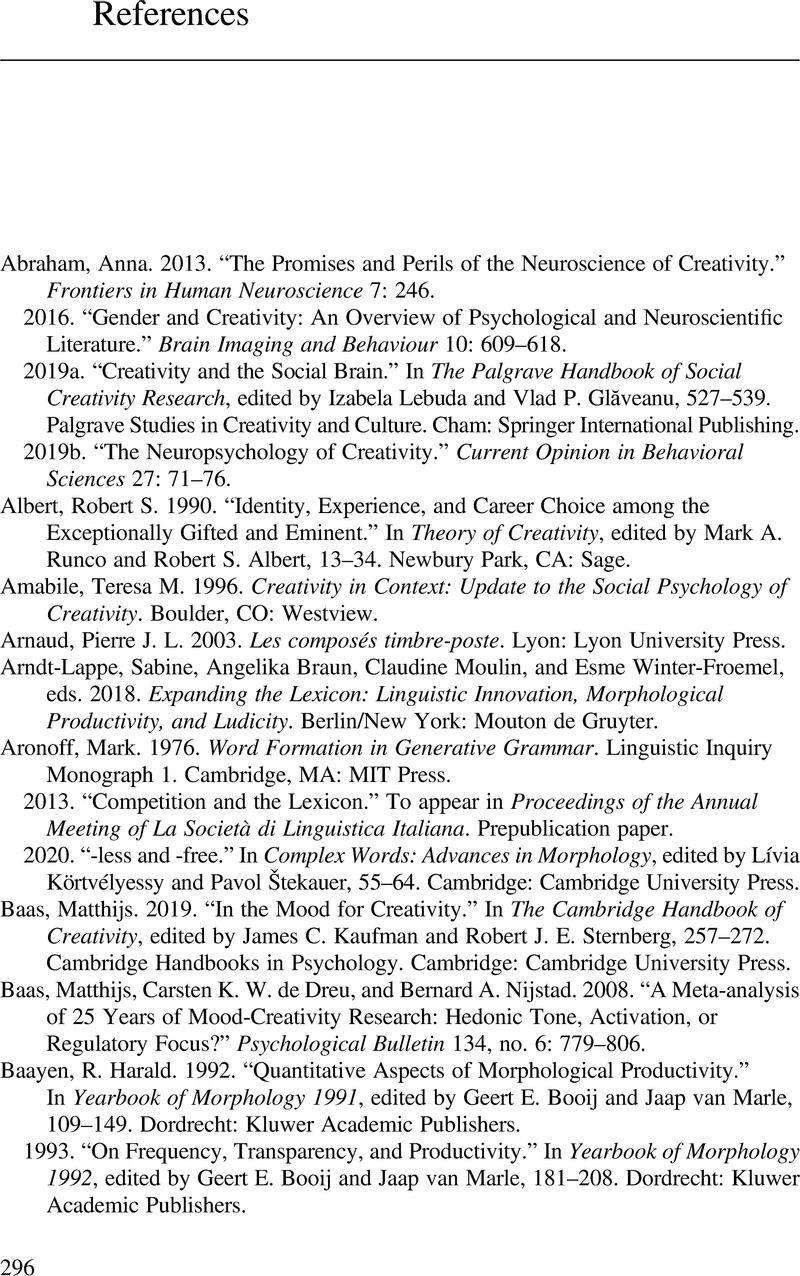Book contents
- Creativity in Word Formation and Word Interpretation
- Creativity in Word Formation and Word Interpretation
- Copyright page
- Contents
- Figures
- Tables
- Acknowledgements
- 1 Introduction
- 2 On the Notion of Creativity
- 3 Theoretical Foundations of Our Research
- 4 Methodological Principles
- 5 Research
- 6 Conclusions
- References
- Author Index
- Subject Index
- References
References
Published online by Cambridge University Press: 20 January 2022
- Creativity in Word Formation and Word Interpretation
- Creativity in Word Formation and Word Interpretation
- Copyright page
- Contents
- Figures
- Tables
- Acknowledgements
- 1 Introduction
- 2 On the Notion of Creativity
- 3 Theoretical Foundations of Our Research
- 4 Methodological Principles
- 5 Research
- 6 Conclusions
- References
- Author Index
- Subject Index
- References
Summary

- Type
- Chapter
- Information
- Creativity in Word Formation and Word InterpretationCreative Potential and Creative Performance, pp. 296 - 311Publisher: Cambridge University PressPrint publication year: 2022



